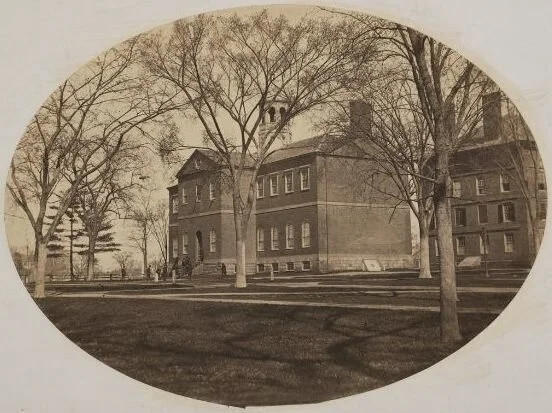Harvard Hall (Harvard Art Museums)
Shimmer Photography Biennale 2016: Alchemical Traces @ Red Poles Gallery
Distinction (chrysotype print) and Intermediary (salt print) from the series 'Drape'
Alchemical Traces: Contemporary South Australian Hand-Craft Photographers
Twelve South Australian photographers bypass digital processes to explore alternative photographic processes and the hand-crafted image of slow photography. As the digital image becomes more immediate and pervasive, these photographers nurture their work through the painstakingly complex, deliberate, and protracted techniques used in traditional laboratories between 100 and 150 years ago.
Chris Reid, Director Blanco Negro
Thanks Chris for your kind words about the Drape series.
Drape exhibition
'Blushing Drape' The Photograph Explained
Thank you Australian Large Format Photography for the invitation to contribute. Reflecting on curious enquiries about the image 'Blushing Drape' and explanation of the large format camera, film and chrysotype process used to produce the print. The article can be found here:
Alternative Photographic Processes Symposium
It was a pleasure to present the historical and contemporary use of the New Chrysotype process at the Australian Photographic Processes Symposium (APPS) in Victoria. Organised and hosted by Gold Street Studios the APPS brings together international and Australian practitioners to examine 19 century photographic practices and their use in contemporary work.
Conservation techniques, the merging of analogue and digital technologies, and ground breaking research (National Gallery of Art, Washington DC) regarding the stability of platinum and palladium prints were discussed. Christina Z Anderson, Associate Professor in Photography from Montana University, Dianne Longely (Agave Print Studio), Lynette Zeeng (Swinburne University) and Jane Wood (State Library of Victoria) were several of the presenters.
A few years ago I was fortunate to be introduced to the New Chrysotype printing process by the affable and generous Dr Mike Ware. A chemist and exhibiting photographer, Dr Ware has been successful in modifying Sir John Herschel's chryostype process of 1842 to overcome issues such as excessive contrast and uncontrollable colours.
New Chrysotype is a print out process that uses UV light (blue end of the spectrum) to produce images that have a delicate tonal gradation and a matt surface finish.
Fascinated by the prospect of achieving a range of monochromatic colours including pink and purple, I began working with this process to explore the colour variations and create images of pure gold. Some examples of the pink achievable with this process and the split tone effect can be found in the Drape series on this site.
Salt printing workshop
I recently ran a salt printing workshop at the Analogue Laboratory in Adelaide with four enthusiastic artists curious about the process.
The salt print is well known for its beautiful warm brown tones and for having a wider tonal range than all other photographic printing processes due to the inherent self-masking ability that occurs during exposure. The workshop showed participants how to create a salt print and some of the different ways the colour and tone can be altered. It wasn’t long before salt print fever took hold and there was a flurry of coating, exposing (the paper!) and tray agitation.
Coating paper with the salt solution
UV exposure unit
Applying and drying the silver nitrate
The washing stages (particularly the final one) are an important aspect in processing a salt print. Washing removes excess silver nitrate, unexposed silver chloride and fixer that can cling to the paper fibres. Insufficient washing is one of the main causes of staining in salt prints (and albumen). Staining can happen gradually. There would be nothing more distressing then seeing your print on someone’s wall six months down the track with a stain like this one below.
The 'let's not wash this properly' test. The stain at the bottom has gradually grown bigger over 6-12 months.
A big round of applause to the gang! They did a great job with their first salt prints. Here's some examples of their work.
Jennifer Hofmann, copyright 2014
Nina Bosco, copyright 2014
Vera Ada, copyright 2014
Vera Ada, copyright 2014
Gilbert Roe, copyright 2014
Nina Bosco, copyright 2014
Many thanks to my mentor, Ellie Young at Gold Street Studios, and her fabulous research into the salt print. The formulas and processes I used in the workshop were adapted from Ellie’s book The Salt Print Manual.
''William Henry Fox Talbot’s salted paper was the first photographic negative to positive silver imaging process in 1834. The ratio between salt and silver nitrate was critical to this success. Achieving a permanent image proved an issue for Talbot until 1839 when, with the help of Sir John Herschel, the first salt print image was permanently ‘fixed’ onto paper.''

















